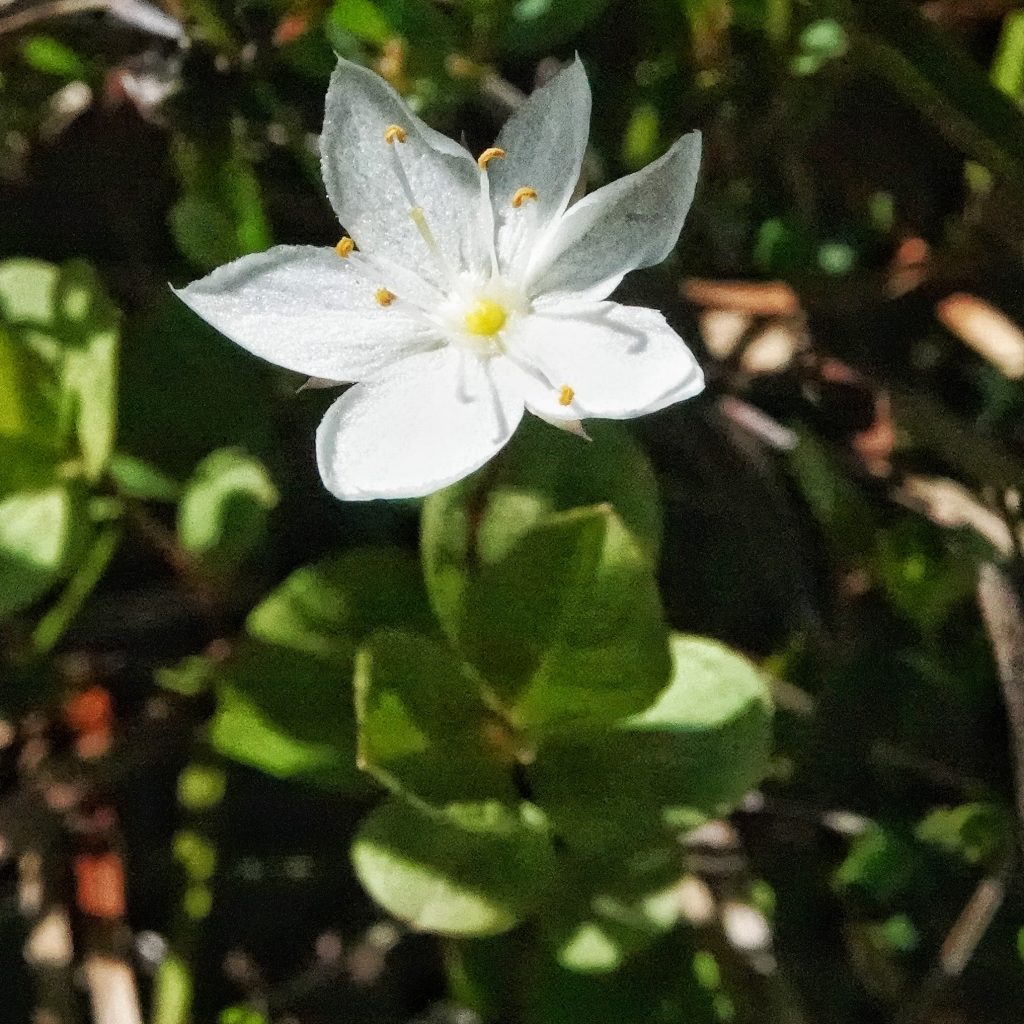
These delightful little flowers puzzled the heck out of me when I found them growing along the margins of the bog I talk about in the blog ‘South Prairie’. My first thought was that their 6 petaled blooms looked like those of Lysimachia latifolia (Pacific starflower), but I wasn’t aware of any close relatives to that species, and I’d left all of my books in the van to lessen the chance of destroying them in those sodden environs, as well as from the fear that plagues of aerial exsanguinators would render moot my ability to use them. But as soon as I returned to the van I looked up Pacific starflower in “Wildflowers of the Pacific Northwest” and saw a mention of Arctic starflower (Lysimachia europaea) in the entry for Pacific starflower, so I looked that up in “Flora of the Pacific Northwest” and realized that that had to be it.

Survival strategies of wetlands plants are always interesting, and Arctic starflower is no exception, which is why I quote extensively from a comprehensive scientific paper on the species, and from a European wildflower website. Lysimachia europaea is considered to be non-nitrophylous, which means it not only doesn’t require much nitrogen to survive, but is somewhat averse to excessive amounts, an ideal combination for a plant living on peat, where nitrogen and other minerals are locked up in complex molecules that most plants can’t access. It is also kind of a Goldilocks plant, inhabiting the narrow window between too wet and too dry, and too open and too shady. But when you find their sweet spot they are a joy to see, quite beautiful against their damp backdrop, and somewhat exotic with their 6, pointed petals. This member of the family Primulaceae is also called chickweed wintergreen in Europe. It has historically been placed in the genus Trientalis , but based on molecular data Manns/Anderberg (2009) placed all of the former members of Trientalis, as well as a number of other genera, into the genus Lysimachia.
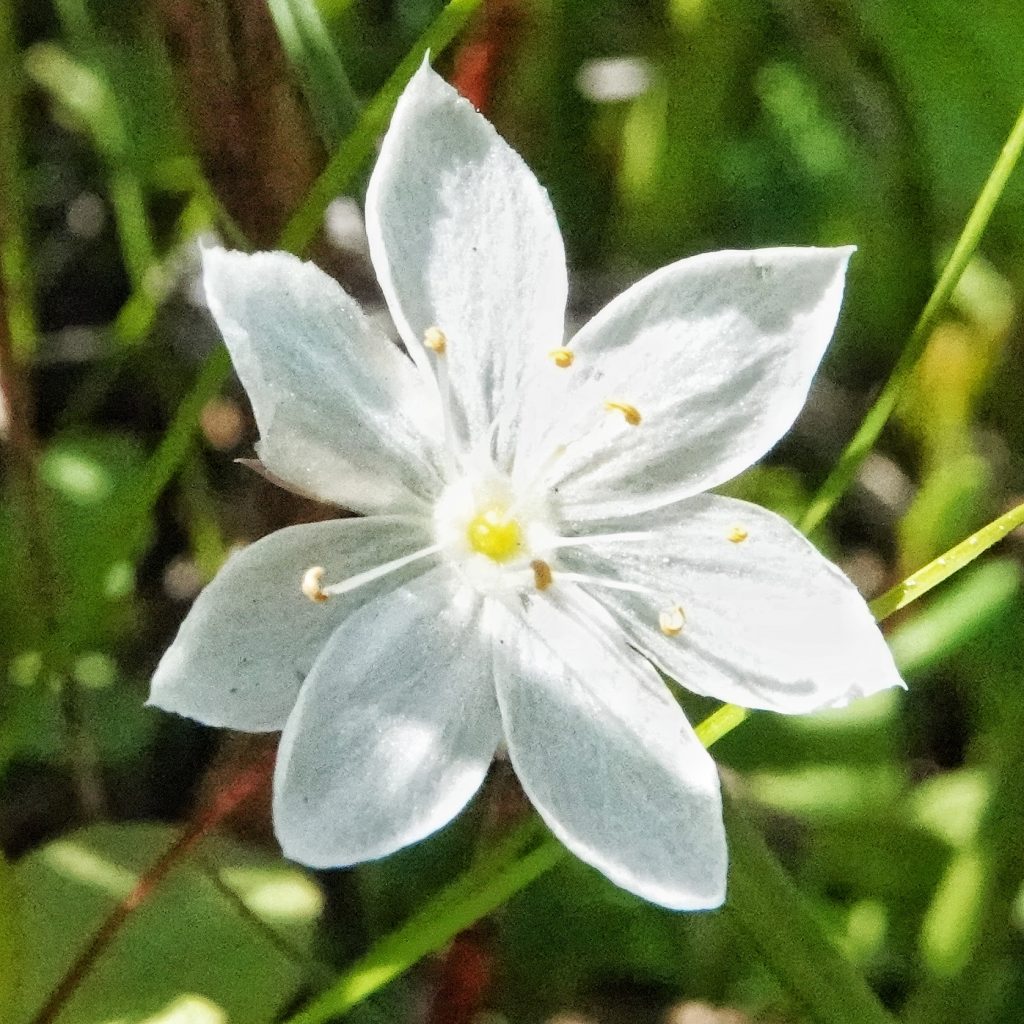
“Roots of T. europaea collected in June 1999 from Firbank Fell, Cumbria, were examined for mycorrhiza. Only a low level (<5%) of arbuscular mycorrhizal colonization was found of the Paris-type (Smith & Read1997). Cortical cells of the root contained coils of coarse hyphae, but no vesicles or arbuscules were seen (R. Francis & D. J. Read, personal communication). Harley & Harley (1987) record both the presence and absence of VA mycorrhiza in T. europaea from continental Europe. The plant is reported by Michelsen et al. (1998) to be non-mycorrhizal in a forest tundra site in northern Sweden, near the Abisko Scientific Research Station.” Trientalis europaea L. – Taylor – 2002 – Journal of Ecology – Wiley Online Library
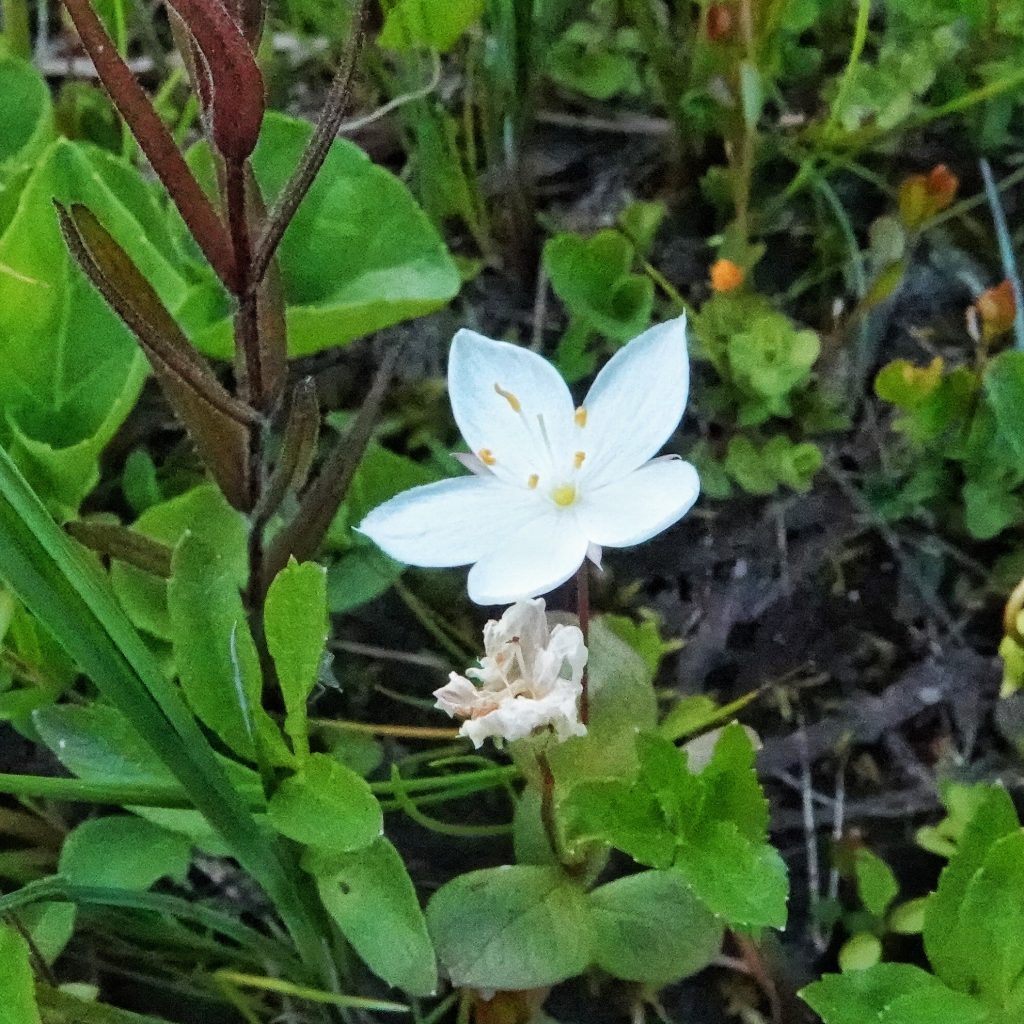
“Trientalis europaea persists overwinter as a tuber which lies horizontally a few centimetres below the soil surface. By early May the upturned, hooked distal end of each tuber begins to elongate giving rise to a new aerial shoot, bearing the leaves and the flower buds that were initiated during the previous autumn. The foliage leaves expand fully, flowering takes place in June–July (May–August in northern Europe); however, few fruits are formed. Stolon-like rhizomes also develop from the basal tuber in July, and by mid August have reached their full length. The apex of each ceases to extend and the tip swells to form a new tuber which continues to enlarge during August, reaching its maximum size by the beginning of September. The shoot remains fairly fresh until the fruit ripens in late August, whereupon it begins to wither. By the end of September, the stolons connecting the mother tuber with the newly formed daughter tubers have decayed. The dry shoot often remains erect throughout the winter and the seeds remain attached until dislodged. Seed germination seldom occurs in nature, and developing seedlings are rarely observed.” Trientalis europaea L. – Taylor – 2002 – Journal of Ecology – Wiley Online Library
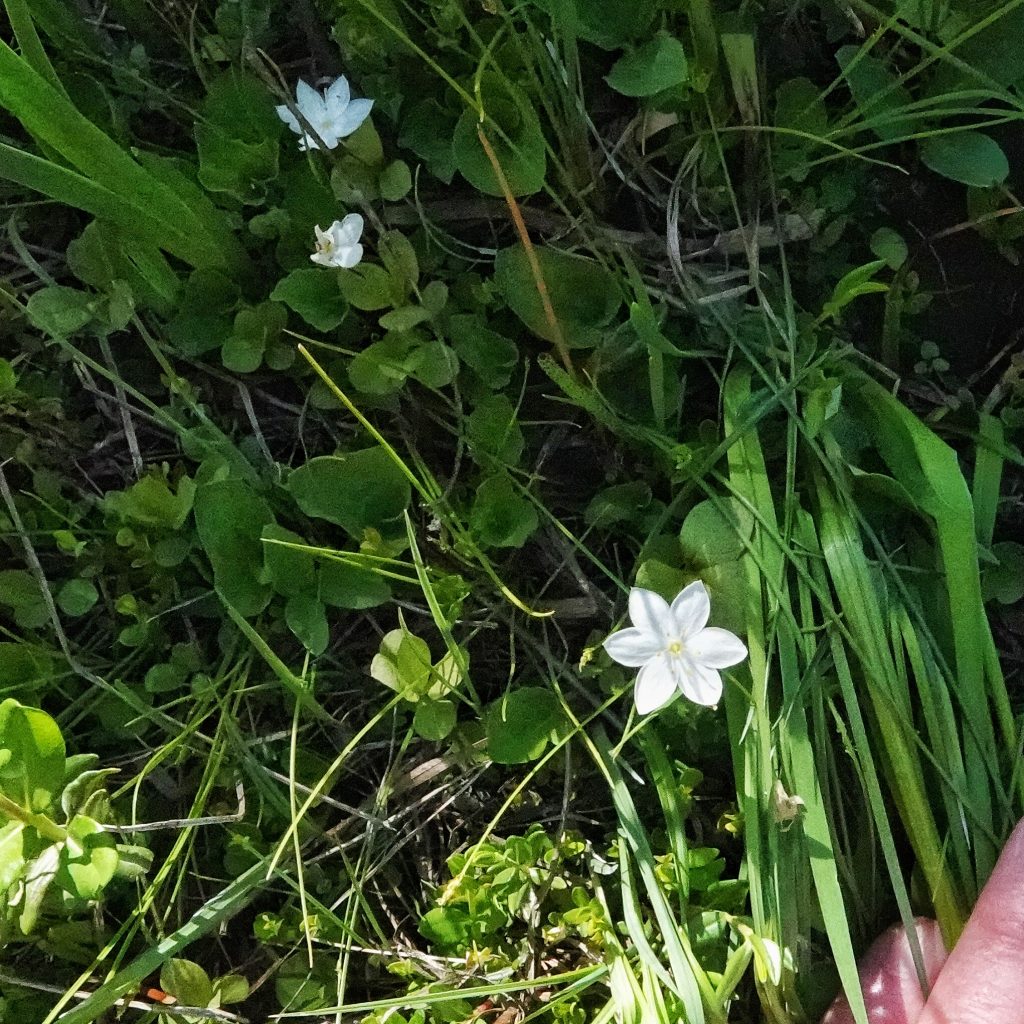
“Chickweed wintergreen’s sexual reproduction is quite inefficient. The only insect that is in any way interested in its flowers are the Melanostoma mellinum flower fly, but pollinators are rarely seen at its flowers. The seeds rarely develop and hardly ever germinate among the crowded plants. The species propagates more efficiently through its runners, which each plant develops two or three, over one metre long. As with other pioneer plants, these runners help the species efficiently colonise disturbed earth like logging areas. Chickweed wintergreen is however also able to grow in relatively shady areas: the leaves of the crown rosette do not cover each other, so they are able to make use of little light. In the dark backwoods the beauty of the shining white flowers has inspired poets and story-tellers, and even the father of contemporary botany Carl von Linné praised the beautiful simplicity of the flowers.” Chickweed Wintergreen, Lysimachia europaea – Flowers – NatureGate
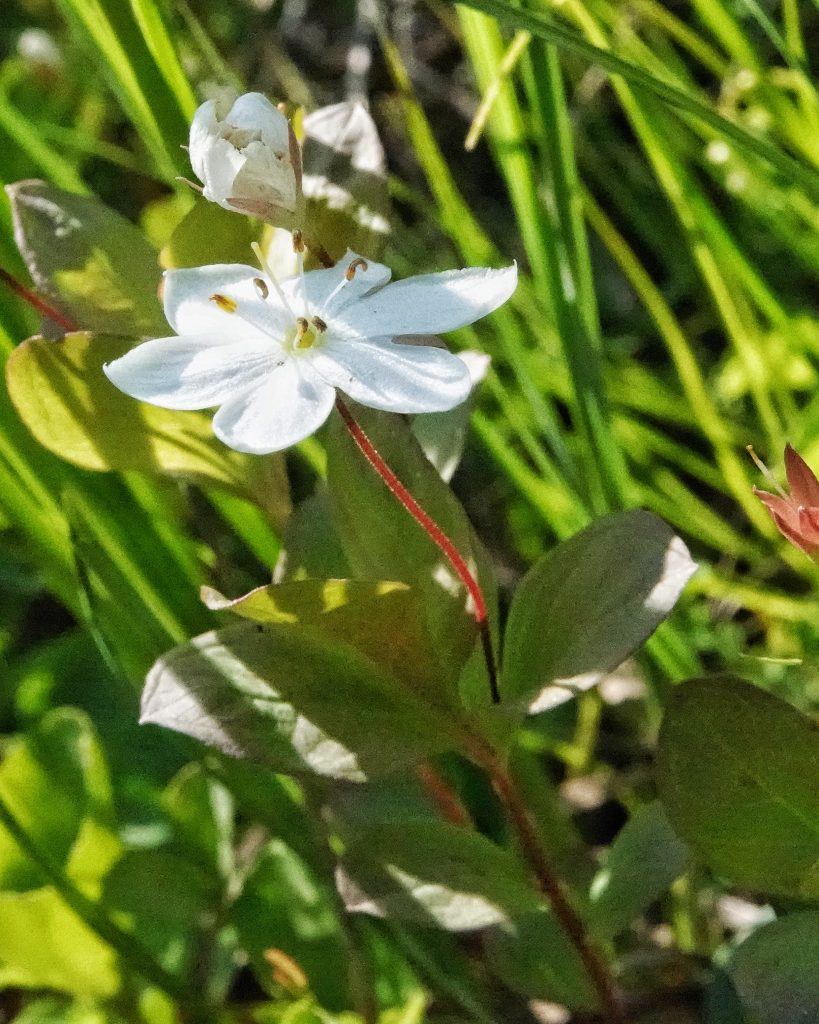
Description– “Perennial herbs from slender rootstocks and tubers, the tubers short and horizontal; flowering stems 5-20 cm. tall. Leaves: Main leaves 3-8 in a terminal whorl, elliptic to obovate, 1.5-5 cm. long, petiolate; cauline leaves few, smaller and reduced downward, sessile. Flowers: Flowers axillary from 1 or more leaf axils, on long, slender, curved pedicels; calyx parted to near the base, the 6 or 7 lobes linear-lanceolate; corolla usually white, 12-16 mm. broad, rotate, the lobes divided nearly to the base and the same number as the calyx, lance-ovate; stamens opposite the corolla lobes, exerted, the filaments glabrous, slender, considerably longer than the anthers.” Lysimachia europaea – Burke Herbarium Image Collection
Similar species– Lysimachia latifolia has flower stalks (pedicels) shorter than the cluster of upper stem leaves, and those leaves are much larger in relation to the flower, as well as lacking stem leaves below the upper cluster.
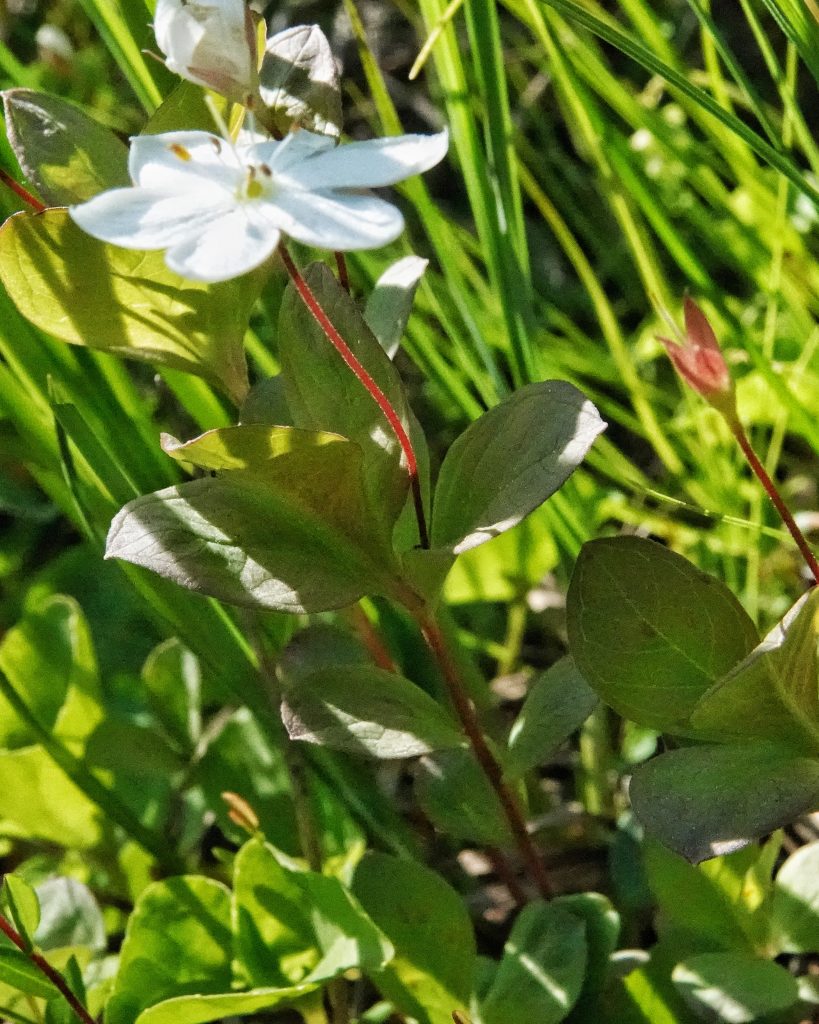
Habitat– Swamps and bogs, low elevations along the coast, low to mid-elevations in the mountains; “Trientalis europaea is a strict calcifuge, being found on soils which have highly acidic, humus-rich surface horizon” Trientalis europaea L. – Taylor – 2002 – Journal of Ecology – Wiley Online Library
Range– Native; “In North America, the species ranges north to Alaska, the Yukon and Northwest Territories, east to Alberta, and south to WA, OR, ID, and CA.” Northern starflower • Trientalis europaea – Biodiversity of the Central Coast; in the PNW it is found west of the crest of the Cascades, and in sw Oregon/nw California; also found in Eurasia and Greenland.
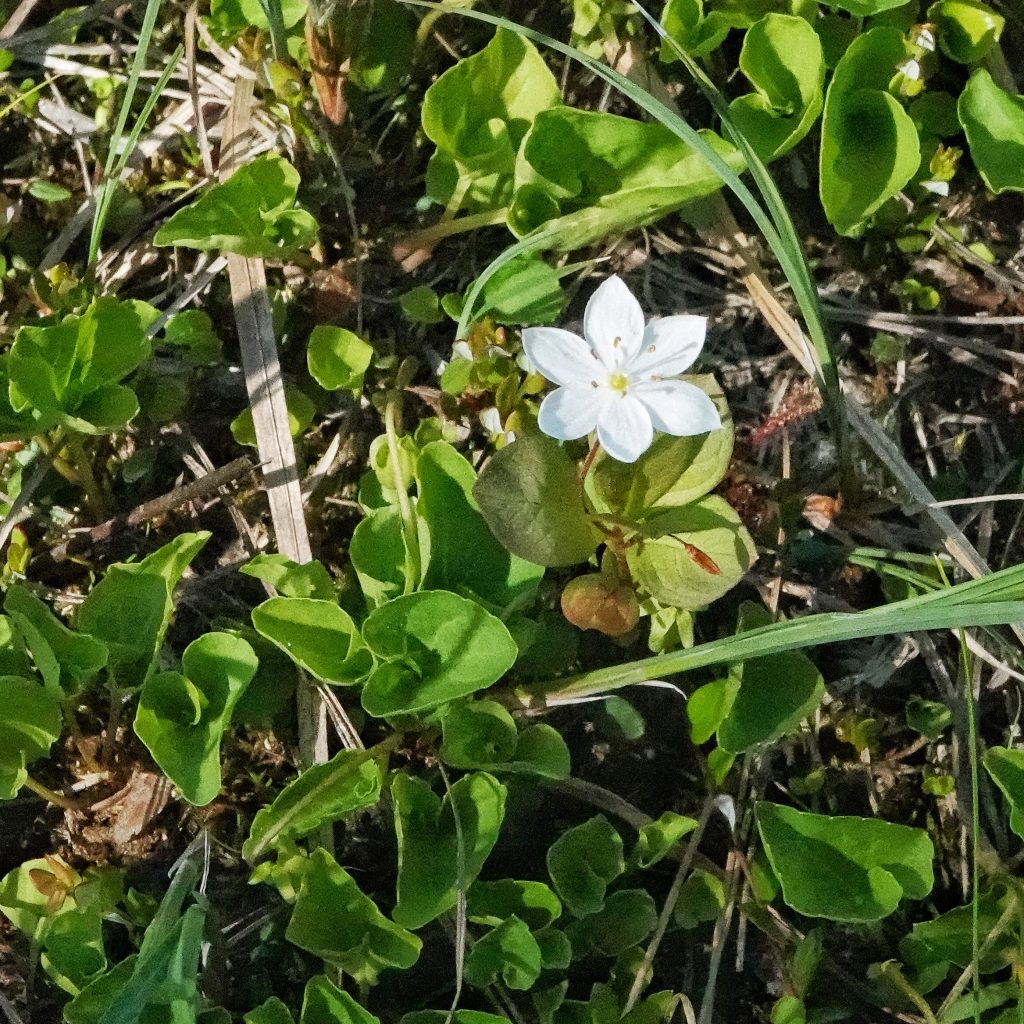
Ethnobotany– I can find no usages by indigenous people. As for other herbalists “The root is emetic[4]. The plant was formerly esteemed as an ingredient in an ointment for treating wounds.” Trientalis europaea Chickweed Wintergreen, Arctic starflower PFAF Plant Database
Eaten by– Apparently some voles and mice feed on these plants, as do some scale insects. Unfortunately that is the extent of the information that I could find on what eats these plants. And the only thing I found on visitors to their nectar was the reference to Melanostoma mellinum in the Nature Gate website mentioned above.
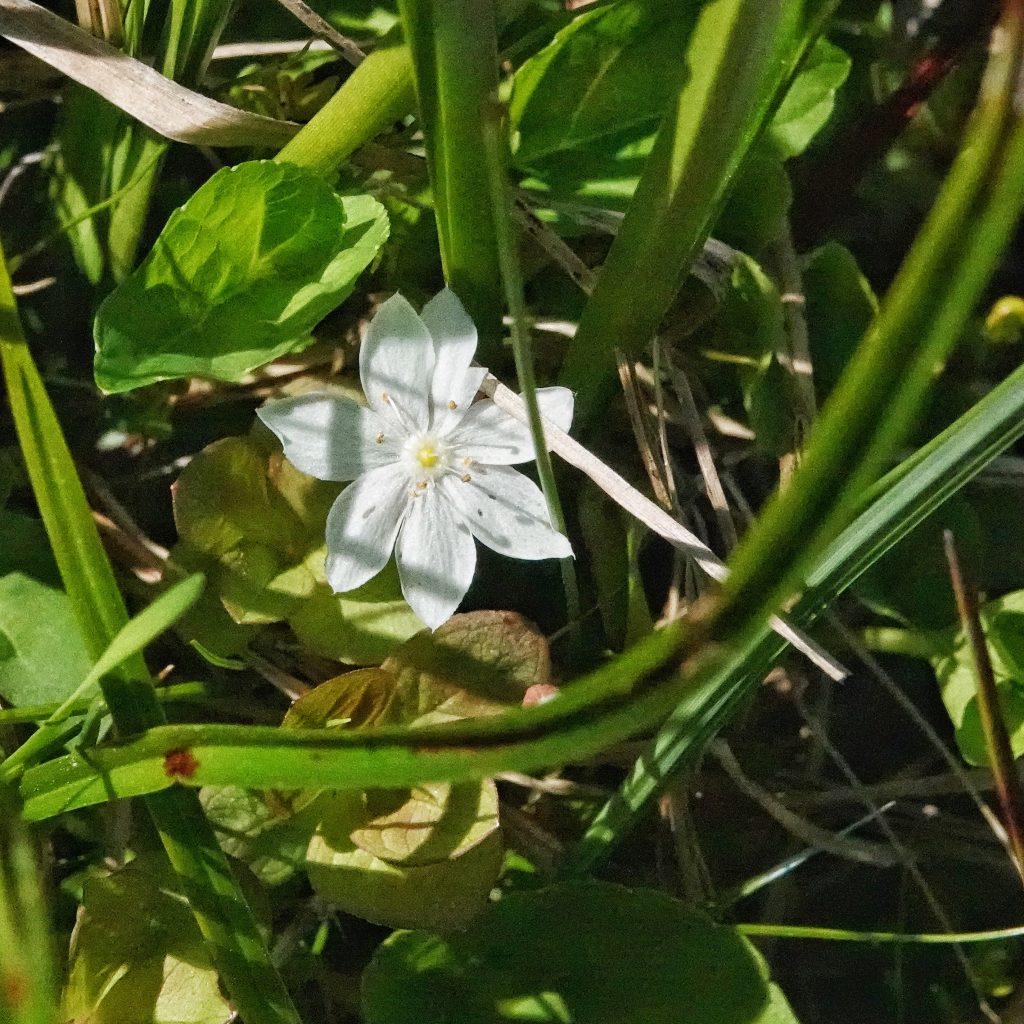
Reproductive timing– May to August, depending on latitude and elevation.
Etymology of names– Lysimachia is from the Greek for ‘dissolving strife’. Macedonian legend credits King Lysimachus with using a member of this genus (also known as loosestrifes, although they are not even in the same family as ‘true loosestrife’, which are in the genus Lythrum) to calm a mad ox. The specific epithet europaea is from the type location for this species, although it is native circumboreally.
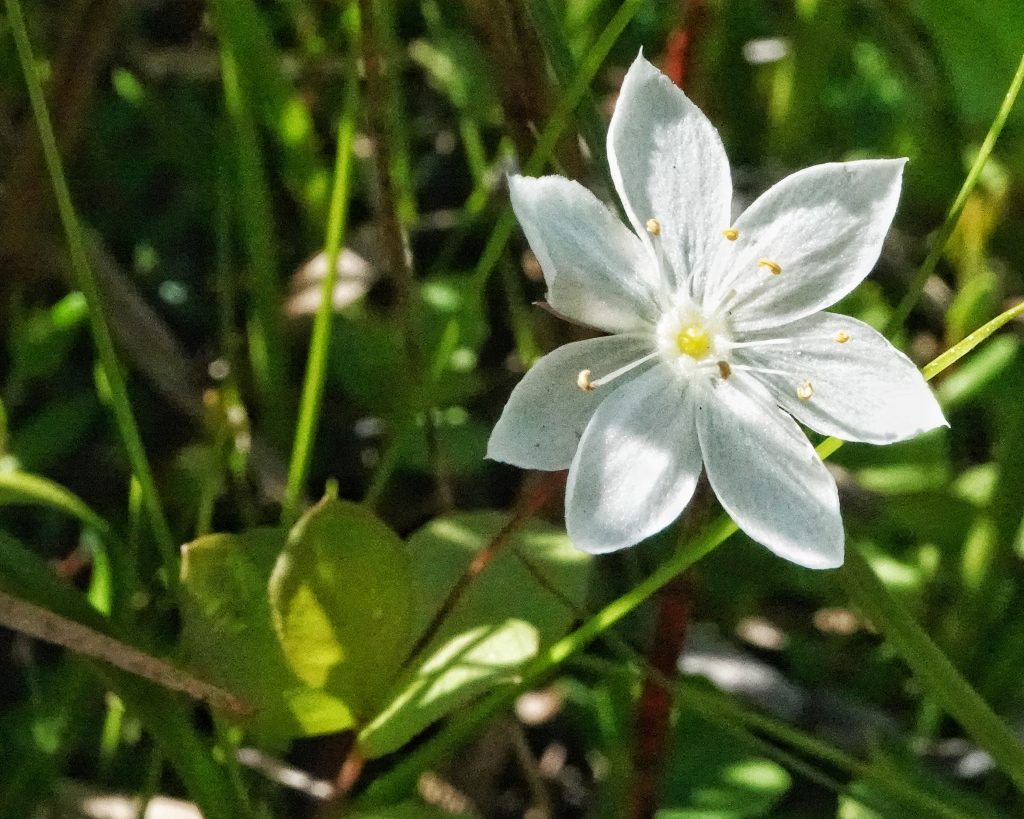
Northern starflower • Trientalis europaea – Biodiversity of the Central Coast
Trientalis europaea L. – Taylor – 2002 – Journal of Ecology – Wiley Online Library
Lysimachia europaea – Burke Herbarium Image Collection
Chickweed Wintergreen, Lysimachia europaea – Flowers – NatureGate
Trientalis europaea Chickweed Wintergreen, Arctic starflower PFAF Plant Database
OregonFlora Lysimachia europaea
https://en.wikipedia.org/wiki/Lysimachia_europaea
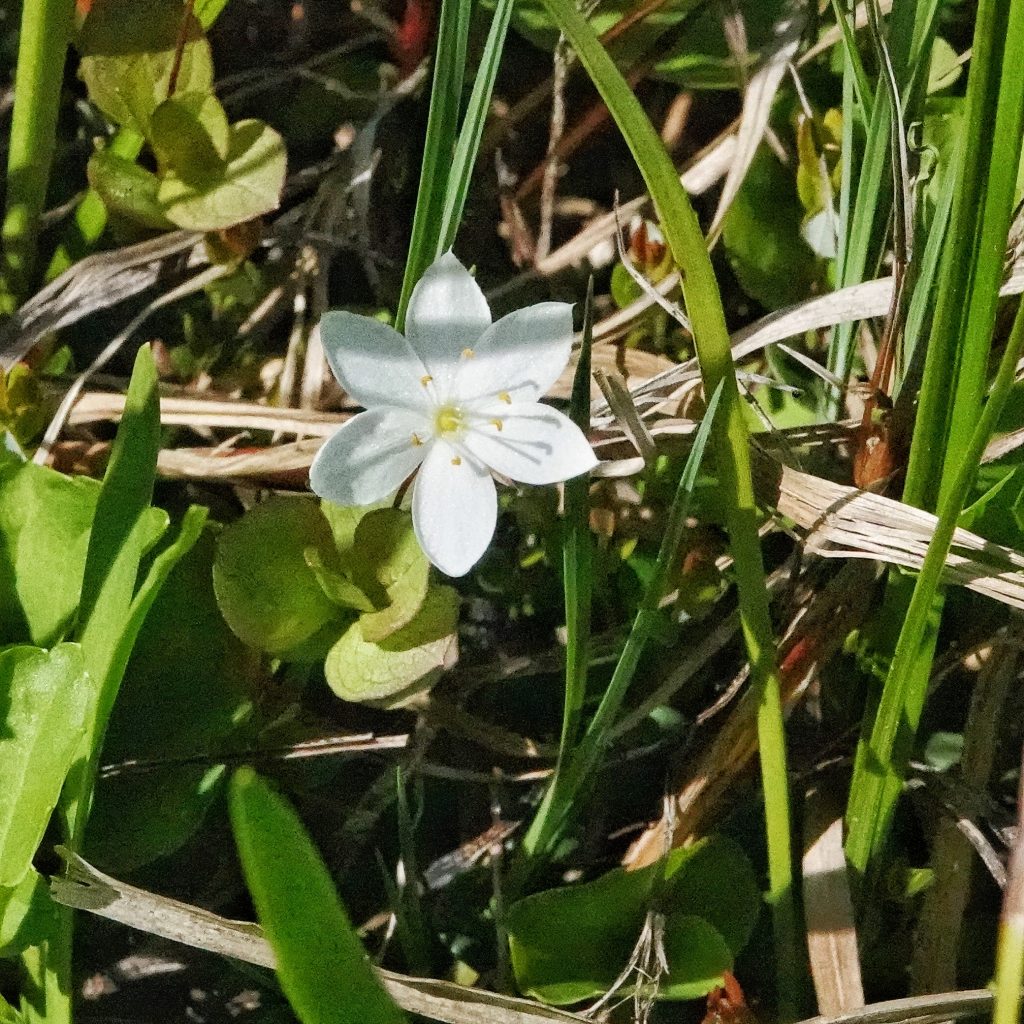
Beautiful and interesting. Thank you!
Thank you for your kind words, Dina! Have you seen this before? Do you have any favorite bogs or fens in your area?